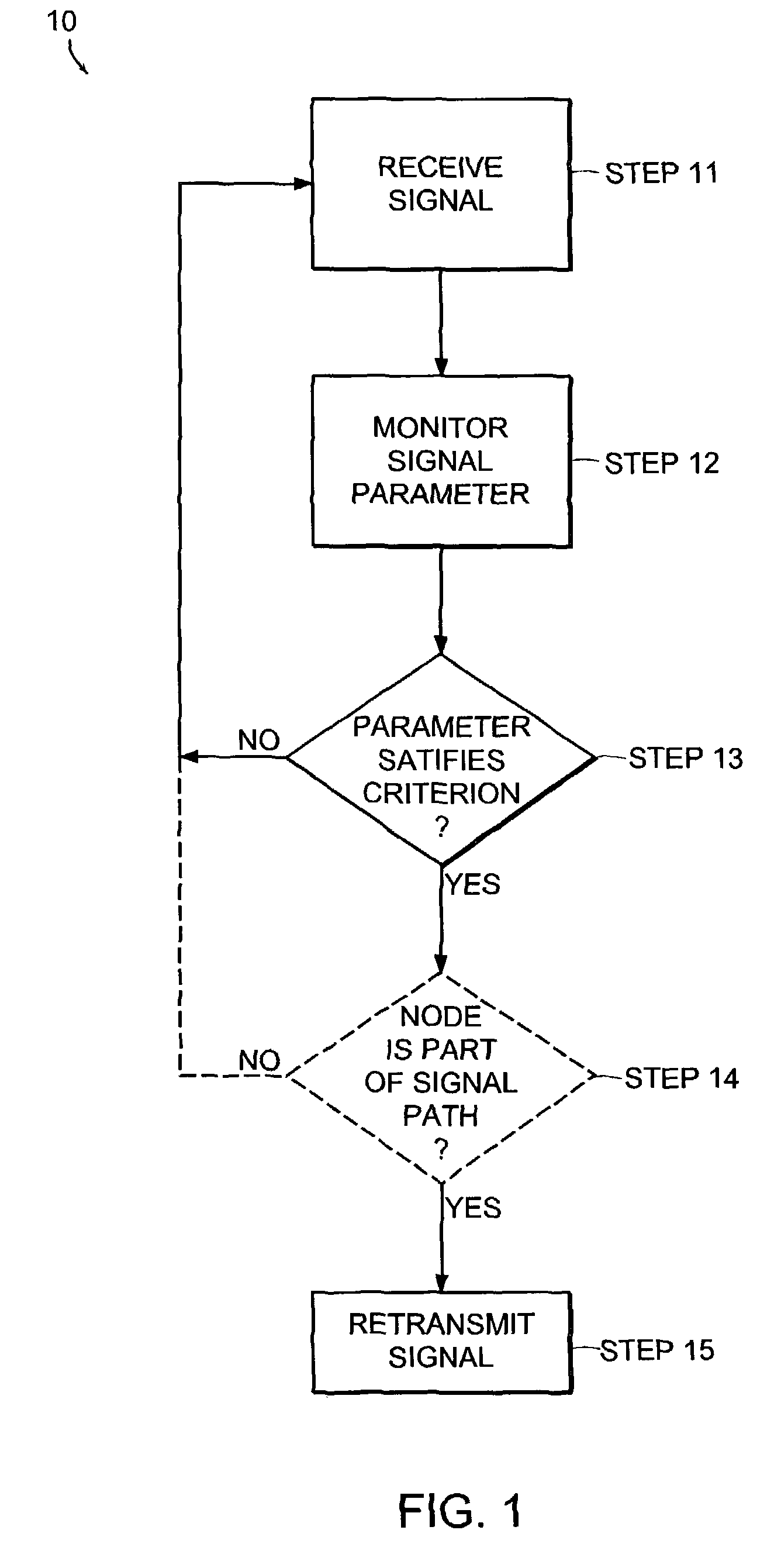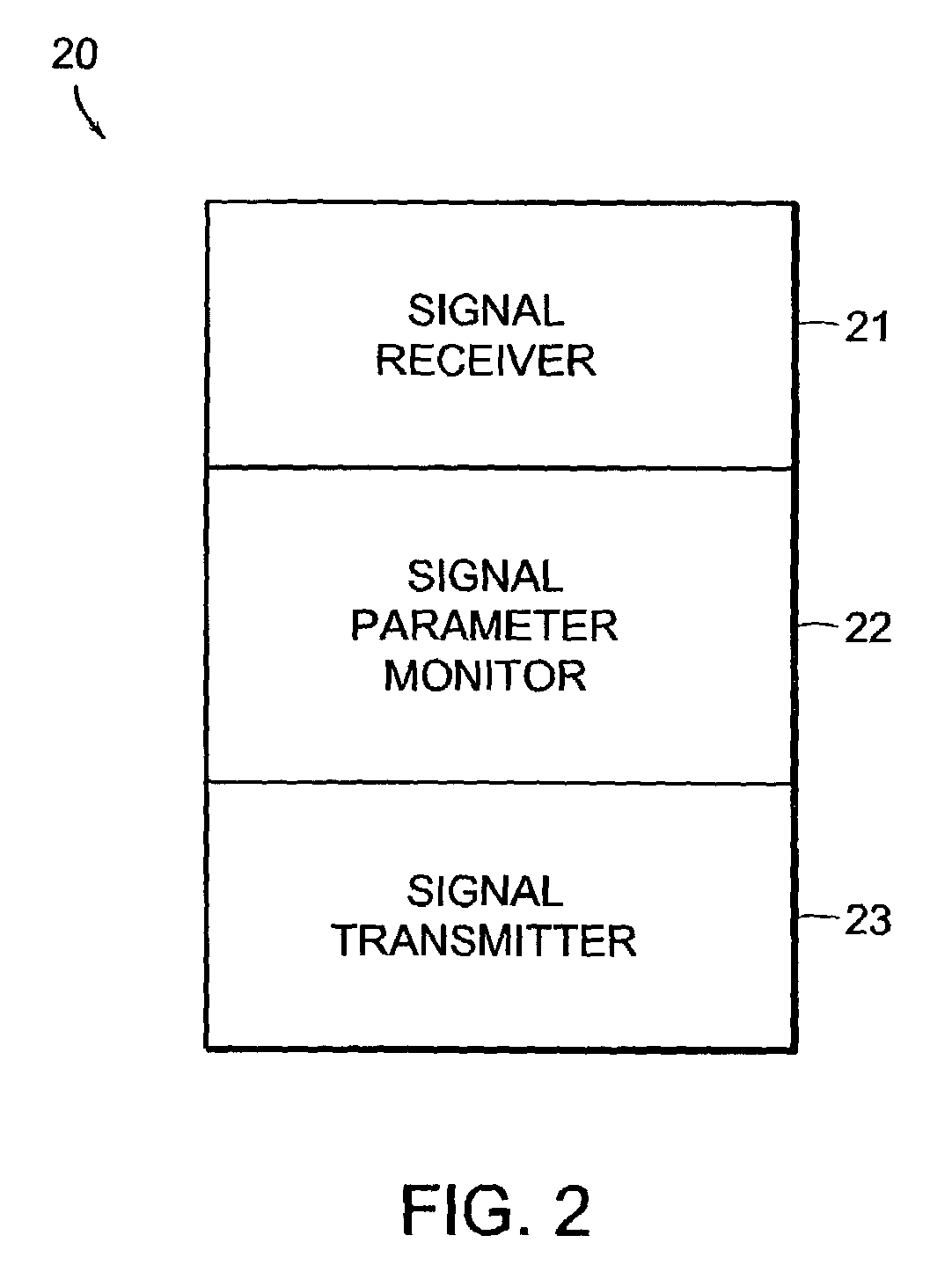Method for automatic signal routing in ad hoc networks
a technology of automatic signal routing and ad hoc networks, applied in the field of network-based communications, can solve the problems of limited capacity of typical cellular networks and similar problems of networks, and achieve the effect of reducing power consumption and reducing the overall network transmission power
- Summary
- Abstract
- Description
- Claims
- Application Information
AI Technical Summary
Benefits of technology
Problems solved by technology
Method used
Image
Examples
Embodiment Construction
[0046]As described in the following, signals have an associated signal “parameter”. The term “parameter” herein means an attribute or characteristic of the energetic or physical makeup of the signal. Thus, a parameter does not include data purposefully encoded into the signal. Parameters can include, for example, a delay value, a power level, a frequency, and can be measured by examination of an initial portion of a received signal. In more detail, a parameter can be, for example, an absolute or relative time of delay, a change in power level of a particular frequency, a presence or absence of a particular frequency, or a phase shift.
[0047]An “electromagnetic signal”, such as a radio-frequency (RF) signal, has, inter alia, amplitude, phase and timing attributes. Such attributes can be observed without decoding data carried by a signal manifested by an RF transmission. Such signal parameters can be affected, for example, by loss of power due to distance traveled, interference between...
PUM
 Login to View More
Login to View More Abstract
Description
Claims
Application Information
 Login to View More
Login to View More - R&D
- Intellectual Property
- Life Sciences
- Materials
- Tech Scout
- Unparalleled Data Quality
- Higher Quality Content
- 60% Fewer Hallucinations
Browse by: Latest US Patents, China's latest patents, Technical Efficacy Thesaurus, Application Domain, Technology Topic, Popular Technical Reports.
© 2025 PatSnap. All rights reserved.Legal|Privacy policy|Modern Slavery Act Transparency Statement|Sitemap|About US| Contact US: help@patsnap.com



